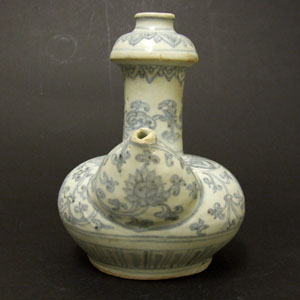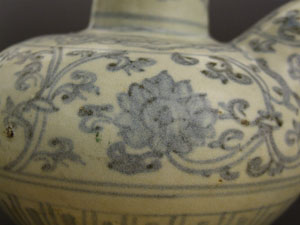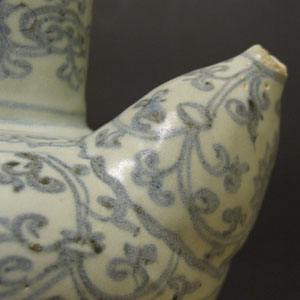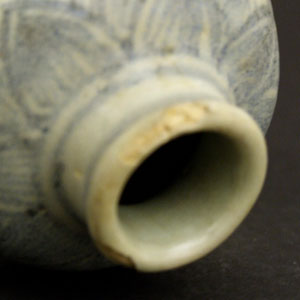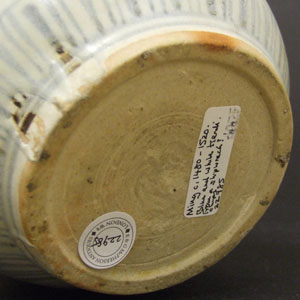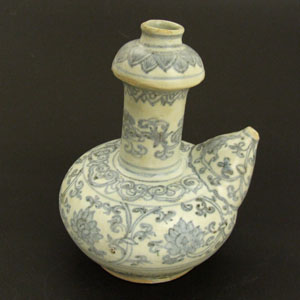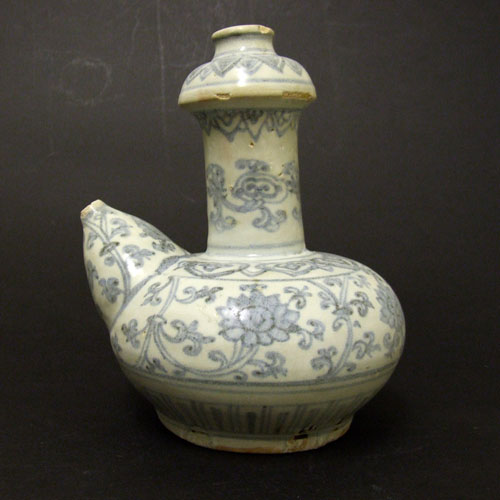
HONGZHI or ZHENGDE 1488 – 1521 Ming Porcelain
A Blue and White Ming Porcelain Kendi, Hongzhi 1488 – 1505 or Zhengde 1506 – 1521. Painted with Scrolling Lotus. Painted in a Cobalt Blue of a Greyish Tone. This Ming Porcelain Kendi Shows Distinct Sign that it Came from a Shipwreck.
SOLD
- Condition
- The surface of this Ming Porcelain kendi bares some of the signs of immersion in salt-water. The surface is minutely pitted and so therefore the sheen is semi-matt. It also feels slightly dry. There is a small chip to the otter rim of the top aperture c.6 x 3mm. There is also some fritting. In addition to this the column to the center of the vessel is slightly off-potted (i.e. it leans a bit).
- Size
- Height : 17.5 cm (7 1/2 inches)
- Provenance
- N/A
- Stock number
- 22985
Information
Pieces like the present Blue and White Ming Porcelain example have traditionally been referred to as `Provincial Blue and White Porcelain` because the potting and painted appear as being some what rustic. Sometimes `provincial` pieces have a great strength and freedom that can be lacking in more refined objects. Recent research in China has shown that there was little Blue and White Porcelain produced outside the main kiln complex of Jingdezhen in Jiangxi Province. The exception might be Dehua in Fujian province but the Blue and White Porcelain production from those kilns is distinct from the kilns at Jingdezhen.
Kendi :
The kendi is defined as a vessel with a round body, tall neck, mouth, a spout on the shoulder and a flat base. The two openings make the kendi suitable for both pouring and drinking liquids. It is distinguished from other pouring vessels such as a jug or flagon by the absence of a handle. The presence of a spout on the shoulder places it in the broader typology of a spouted vessel. To drink from a kendi, grasp the neck with one hand ; place the other on the base for support if desired, hold the vessel away from the body, point the spout towards the mouth and slowly tilt it to start the water flowing. As the lips never touch the spout, the kendi is a hygienic and convenient communal drinking vessel.
Lotus :
The lotus is one of the most important symbols in the Chinese art. This Buddhist emblem is a symbol of purity, as the perfect flower grows out of muddy ponds without a stain. The words for lotus in Chinese has the same meaning as to bind, connect (in marriage). It is one of the Eight Auspicious Symbols of Buddhism. It is the flower used to represent summer.
